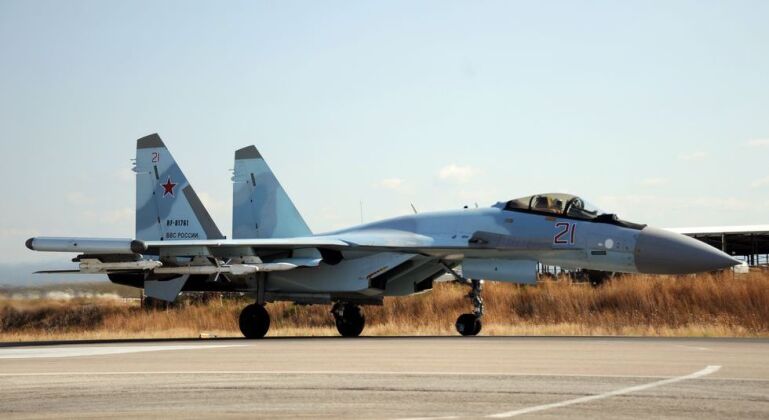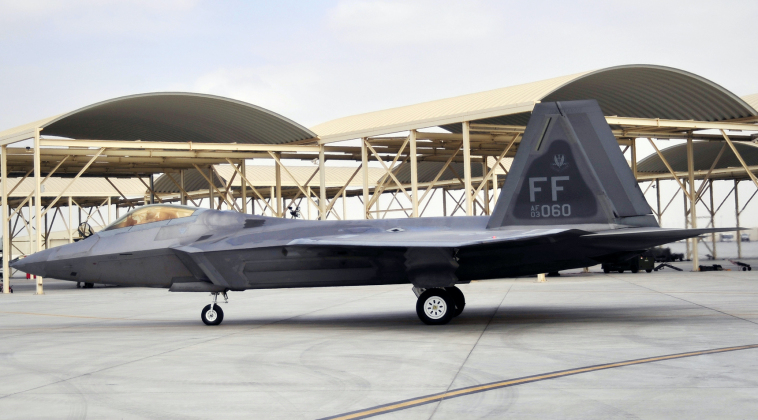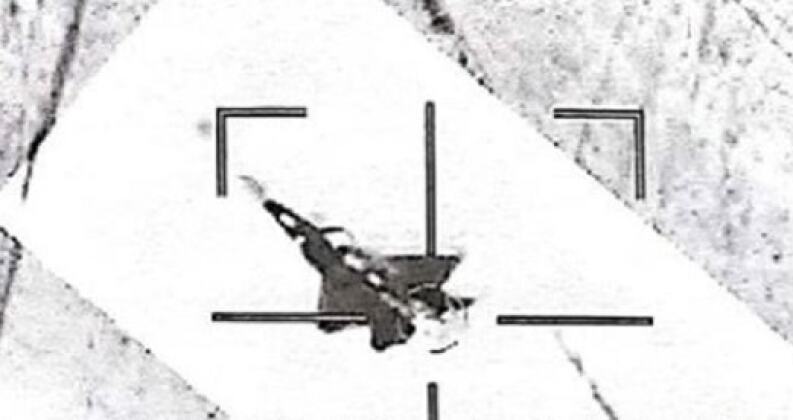News
Russian Su-35 Interceptions of American Drones Over Syria: Tensions on ‘Second Front’ Continue to Escalate
In the latest of multiple incidents between Russian and U.S. forces in Syria, which have resulted in a gradual rise of tensions in the theatre, three Russian Air Force Su-35S Flanker air superiority fighters on July 5 conducted aggressive manoeuvres near three U.S. Air Force MQ-9 Reaper attack drones. The fighters reportedly dropped parachute flares in the path of the drones, which marks only the latest of multiple incidents in which Russian fighters have attempted to disrupt flights of American unmanned aircraft. A notable previous case saw a Russian Su-27 Flanker, which uses the same basic highly manoeuvrable airframe design as the Su-35, conduct similar manoeuvres near an MQ-9 drone near Crimea in Eastern Europe in March causing the unmanned aircraft to crash. Regarding the latest incident, head of the U.S. Air Forces Central Command Lieutenant General Alex Grynkewich commented on July 5 that the Flankers were “engaged in unsafe and unprofessional behaviour while interacting with U.S. aircraft in Syria,” and that “three Russian fighter jets began harassing the drones… forcing our aircraft to conduct evasive manoeuvres.” The Russian Defence Ministry responded by clarifying that its interceptions of American drones were in response to their violation of deconfliction mechanisms in place between the two countries’ forces in Syria, stating: “The Russian side once again expresses concern about the systematic violations of deconfliction protocols related to the flights of unmanned aerial vehicles of the so-called international anti-terrorist coalition.”

Russian allegations that American aircraft penetrating too deeply into restricted parts of Syrian airspace began to be made with greater frequency in early June, leading the U.S. Air Force on June 14 to deploy two F-22 fifth generation fighter aircraft to the United Arab Emirates – their primary base of operations in the Middle East well within range of targets in Syria. The specific purpose of the deployment was to deter Russian forces in Syria. The Russian Air Force itself on July 6 began exercises with the Syrian Air Force training for “issues of control of the airspace of Syria” and repelling incursions by foreign aircraft. Su-35s were first deployed to Syria specifically to counter potential threats from NATO aircraft to Russian counterinsurgency operations in the theatre, with the aircraft making their debut in the country in early 2016 less than two years after joining the Air Force. They were the first Russian fighter units seen armed with new R-77-1 air to air missiles.

The Su-35 is a ‘4++ generation’ fighter that lacks the advanced stealth capabilities of the F-22, although as a much newer aircraft developed a decade later it has a number of significant performance advantages. These include its endurance, weapons payload, air to air engagement range, manoeuvrability, use of triple radars and infrared sensors compared to the Raptor’s single radar, and perhaps most significantly its high off boresight targeting capabilities allowing it to engage targets at extreme angles within visual ranges. The last is a feature the F-22 is the only American fighter class to lack in all its variants. Over Syria Su-35s will also benefit from shared sensor data with the Syrian and Russian air defence networks in the country, which include S-400 and S-300V4 systems optimised for tracking stealth aircraft. The Su-35’s advantages are significantly more pronounced in the air to surface domain where the F-22’s capabilities are the most limited of any 21st century fighter class due to lack of compatibility with any missile classes or high diameter bombs. Although Russian fighter radars are considered less sophisticated than those on the latest Chinese and American aircraft, its aircraft are still considered world leaders in infrared search and tracking systems, with images showing Su-35s tracking F-22s over Syria using their infrared sensors having been released in the past.

Amid ongoing hostilities between NATO and Russian in Ukraine, which has involved the deployment of large contingents of Western forces for a wide range of roles from combat to logistics alongside the Ukrainian Armed Forces, Syria has represented a second front of tensions between Moscow’s forces and those of the Western Bloc. Russian and U.S. forces have been on opposing sides of conflict in the Arab state since 2015, when the Russian Military launched a large scale campaign to support Syrian government counterinsurgency efforts targeting militant groups which were being actively supported by NATO member states primarily the United States, France, Britain and Turkey. With insurgents largely defeated, they today operate only in enclaves near the Turkish and Iraqi borders under the protection of the Turkish and U.S. militaries respectively. While the Russian Military’s presence has been condoned by the Syrian government, however, those of the U.S., Turkey and their allies are considered illegal since they lack authorisation either from the United Nations Security Council or from Damascus which are the only parties which can legitimise military presences on Syrian soil. The United States has faced growing international criticism for its extraction and sale of Syrian oil to fund its occupation of the country’s oil rich northeastern regions, which has been widely likened by scholars of international politics and international law with pillaging – a serious war crime.












